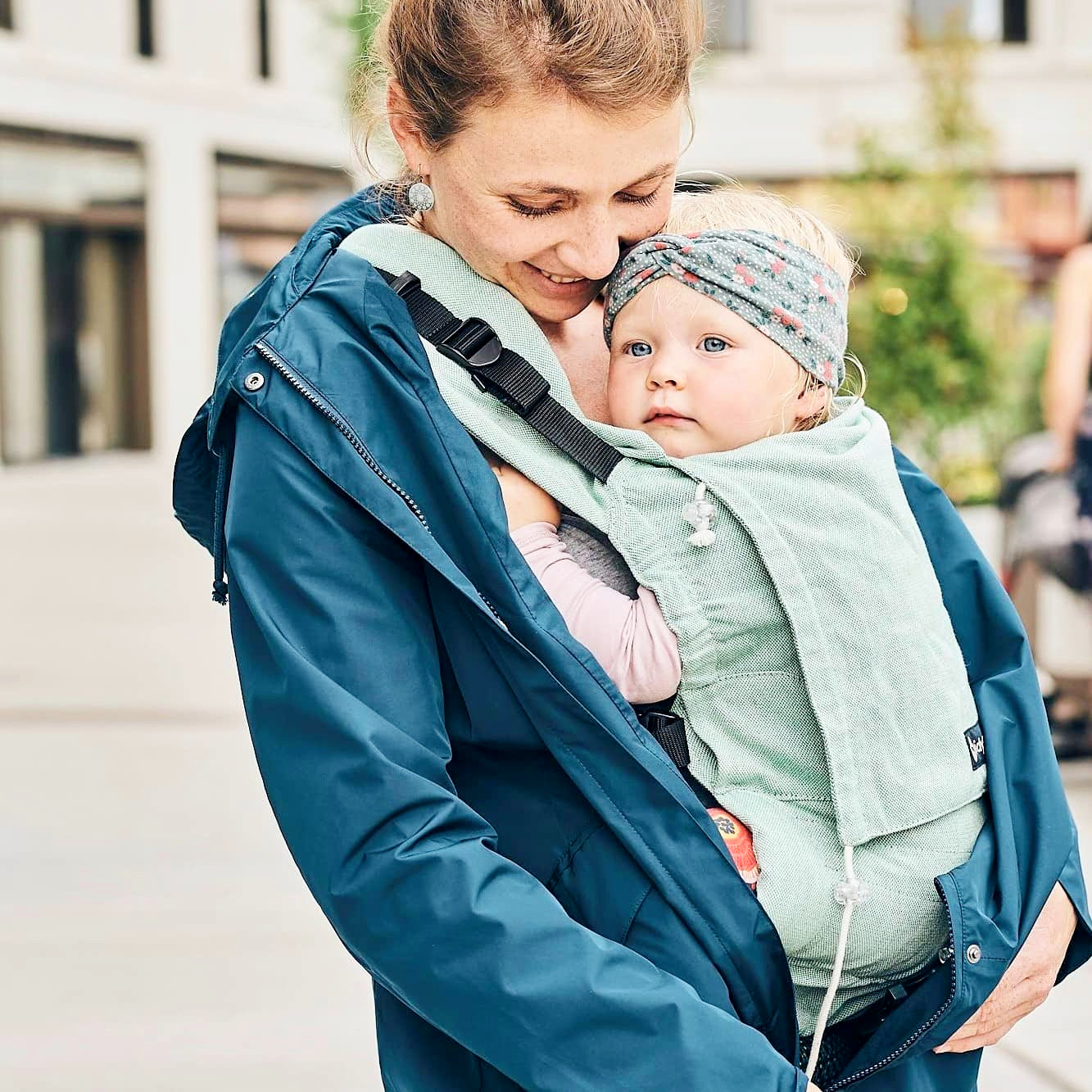Carry your child on your back!

Babywearing is, in a word, practical! While we care for our baby, and any older siblings, we can have both hands free to get things done and manage the daily grind.
What if we could tell you there is a simple way to increase your freedom of movement?
You don’t believe it?
Well, it’s possible when you carry your child on your back.
In cultures around the globe, people have been carrying their babies on their backs – even starting as young as the newborn period.
You, too, can back carry your child!
The many advantages of babywearing on the back
- Physiologically, it’s easier for you to carry your child on your back. Think backpacks, not front packs.
- While it helps to save your pelvic floor and back from strain, it also strengthens your back and core muscles as your child grows.
- From around 4 to 5 months your baby is more relaxed when carried on the back – they can look around and see the world from a different perspective.
- Your whole front is free to do all you need or want to do: cook, eat, shop, hike or simply relax.
- Your baby’s weight is better distributed over the shoulders and back of the wearer – ideal for prolonged hours of babywearing.
- Can be helpful during weaning: With baby on your back, your breast is “out of sight, out of mind.”
When can I begin back carrying?
Experienced babywearers can carry their baby on their back from birth. For all others we recommend: Take your time, practice and gain confidence in your babywearing skills!
If you’re new to babywearing, we suggest waiting until your baby is demonstrating good, strong and consistent head control. This happens commonly around 4 to 5 months.
Around this time, you’ll notice that your baby will actively seek ways to see the world by tossing and turning when carried in a front carry – this is the cue it’s time to start back carrying.
Which carriers are suitable for back carries?
Good news: No matter which DIDYMOS baby carriers you have, they all work for back carrying - be it a baby wrap tied in a Simple Rucksack or a Double Hammock Carry, a ring sling or a carrier like the DidyKlick, DidySnap or DidyTai.
When your baby can sit unaided, you may want to use the Didy Onbuhimo which is an easy and quick option for babywearing on the back.
How do I back carry?
Carrying your child on your back may seem challenging at first. But don’t give up! Give it time and practice and it will become second nature soon.
If you want to feel secure, consider getting assistance from a trained babywearing consultant.
DidyTip: Some people practice their first back carries with a teddy bear or a doll and do not hesitate to ask another person to help and support you. Make sure to practice over a soft surface.
Quick start:
DIDYMOS baby wrap on the back
DidyTip: Start practicing with a Simple Rucksack Carry. When you and your baby are familiar with this carry you can start with other back carry styles and eventually tie a fancy finish.
Ringsling (DidySling) on the back
DidyKlick on the back
DidySnap on the back
DidyTai on the back
Didy Onbuhimo on the back
Still unsure?
Then become part of our DIDY Community on Facebook to seek out and get advice from other babywearing enthusiasts who will love to share their tricks and show you more fancy tying styles.
This blog post is from Tabea







